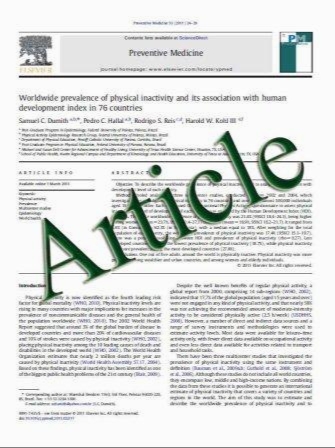The relation between bone mineral density, bone turnover markers, and vitamin D status in ankylosing spondylitis patients with active disease: a cross-sectional analysis
- نوع فایل : کتاب
- زبان : انگلیسی
- مؤلف : S. Arends & A. Spoorenberg & G. A. W. Bruyn & P. M. Houtman & M. K. Leijsma & C. G. M. Kallenberg & E. Brouwer & E. van der Veer
- چاپ و سال / کشور: 2010
Description
Summary Osteoporosis is a well recognized complication of ankylosing spondylitis (AS). This study indicates that increased bone turnover, inflammation, and low vitamin D levels are important in the pathophysiology of AS-related osteoporosis, and that bone turnover markers (BTM) are valuable markers to detect bone loss in AS. Introduction The aim of this study was to elucidate the pathophysiology of AS-related osteoporosis by investigating the relation between bone mineral density (BMD), BTM, vitamin D, and clinical assessments of disease activity and physical function, as well as to identify parameters that are related to low BMD (osteopenia or osteoporosis) in AS patients with active disease. Methods One hundred twenty-eight consecutive Dutch AS outpatients were included in this cross-sectional study. Bath AS Disease Activity Index (BASDAI), erythrocyte sedimentation rate (ESR), C-reactive protein, ASAS-endorsed disease activity score (ASDAS), Bath AS Functional Index (BASFI), bone formation markers procollagen type 1 N-terminal peptide (PINP) and osteocalcin (OC), bone resorption marker serum C-telopeptides of type I collagen (sCTX), 25-hydroxyvitamin D (25OHvitD), lumbar spine and hip BMD, and vertebral fractures were assessed. Z-scores of BTM were calculated using matched 10-year cohorts of a Dutch reference group to correct for the normal influence that age and gender have on bone turnover. Results sCTX Z-score, OC Z-score, BASDAI, age, and gender were independently related to low BMD. In addition, PINP Z-score, ESR, 25OHvitD, age, and gender were independently related to sCTX and/or OC Z-score. Conclusions This study indicates that increased bone turnover, inflammation, and low vitamin D levels are important in the pathophysiology of AS-related osteoporosis. Furthermore, sCTX and OC Z-scores seem to be valuable markers to detect bone loss in AS patients in daily clinical practice where BMD of the lumbar spine, measured by DXA, may be overestimated due to osteoproliferation in patients with advanced AS.
Osteoporos Int (2011) 22:1431–1439 DOI 10.1007/s00198-010-1338-7 Received: 5 January 2010 / Accepted: 27 May 2010 / Published online: 6 July 2010


